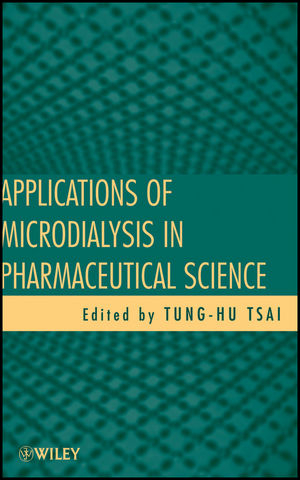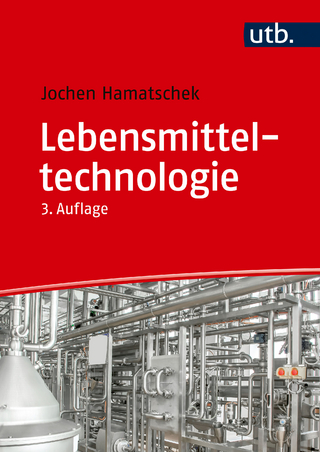
Applications of Microdialysis in Pharmaceutical Science
John Wiley & Sons Inc (Verlag)
978-0-470-40928-2 (ISBN)
Discover new and emerging applications for microdialysis in drug evaluation
Microdialysis is a highly valuable sampling tool that can be used in vivo to measure free, unbound analyte concentrations located in interstitial and extracellular spaces. This book explores the full range of clinical applications for microdialysis, focusing on its use in different organ and tissue systems for pharmacokinetic and pharmacodynamic studies. Readers gain a full understanding of the underlying science of microdialysis, current techniques and practices, as well as its many applications in pharmaceutical research.
Applications of Microdialysis in Pharmaceutical Science starts with an introduction to basic principles and then covers analytical considerations, pharmacodynamic and pharmacokinetic studies, clinical aspects, and special applications. Topics include:
Role of microdialysis in drug development, including crucial sampling considerations and applications for nervous system diseases
Continuous measurement of glucose concentrations in diabetics
Applications for clinical evaluation and basic research on organ systems, including monitoring exogenous and endogenous compounds in the lungs
Pharmacokinetic and pharmacodynamic evaluation of anticancer drugs
Comparison of microdialysis with imaging approaches to evaluate in vivo drug distribution
Special applications of microdialysis in studies of cell culture assays, drug-drug interactions, and environmental monitoring
Throughout the book, readers will find simple models that clarify complex concepts and easy-to-follow examples that guide them through key applications in pharmaceutical research. In short, this book enables pharmaceutical researchers to take full advantage of microdialysis techniques for the preclinical and clinical evaluation of drugs and much more.
Tung-Hu Tsai, PhD, is a Professor at the Institute of Traditional Medicine, National Yang-Ming University, Taiwan. He has published more than 200 papers in the field of pharmaceutical analysis, herbal medicine, and pharmacokinetics. Dr. Tsai's current research focuses on the mechanisms of pharmacokinetic pathways, emphasizing hepatobiliary excretion and barrier transportation.
Contributors xi 1. Introduction to Applications of Microdialysis in Pharmaceutical Science 1
Tung-Hu Tsai
2. Microdialysis in Drug Discovery 7
Christian Höcht
1. Introduction 7
2. Phases of Drug Development 8
3. Role of Biomarkers in Drug Development 11
4. Role of Pharmacokinetic-Pharmacodynamic Modeling in Drug Development 12
5. Role of Microdialysis in Drug Development 15
6. Microdialysis Sampling in the Drug Development of Specific Therapeutic Groups 20
7. Regulatory Aspects of Microdialysis Sampling in Drug Development 29
8. Conclusions 30
3. Analytical Considerations for Microdialysis Sampling 39
Pradyot Nandi, Courtney D. Kuhnline, and Susan M. Lunte
1. Introduction 39
2. Analytical Methodologies 49
3. Conclusions 75
4. Monitoring Dopamine in the Mesocorticolimbic and Nigrostriatal Systems by Microdialysis: Relevance for Mood Disorders and Parkinson’s Disease 93
Giuseppe Di Giovanni, Massimo Peirucci, and Vincenzo Di Matteo
1. Introduction 93
2. Pathophysiology of Serotonin-Dopamine Interaction: Implication for Mood Disorders 94
3. Dopamine Depletion in the Nigrostratal System: Parkinson’s Disease 109
4. Conclusions 120
5. Monitoring Neutrotransmitter Amino Acids by Microdialysis: Pharmacodynamic Applications 151
Sandrine Parrot, Bernard Renaud, Luc Zimmer, and Luc Denoroy
1. Introduction 151
2. Monitoring Neurotransmitter Amino Acids by Microdialysis 152
3. Basic Research on Receptors 162
4. Psychostimulants and Addictive Drugs 168
5. Analgesia 177
6. Ischemia-Anoxia 182
7. Conclusions and Perspectives 188
6. Microdialysis as a Tool to Unravel Neurobiological Mechanisms of Seizures and Antiepileptic Drug Action 207
Ilse Smolders, Ralph Clickers, and Yvette Michotte
1. Introduction 207
2. Microdialysis to Characterize Seizure-Related Neurobiological and Metabolic Changes in Animal Models and in Humans 209
3. Microdialysis as a Chemoconvulsant Delivery Tool in Animal Seizure Models 217
4. Microdialysis Used to Elucidate Mechanisms of Electrical Brain Stimulation and Neuronal Circuits Involved in Seizures 218
5. Microdialysis Used to Unravel the Mechanisms of Action of Established Antiepileptic Drugs and New Therapeutic Strategies 219
6. Microdialysis Studies in the Search for Mechanisms of Adverse Effects of Clinically Used Drugs, Drugs of Abuse, and Toxins 224
7. Combining Microdialysis with Other Complementary Neurotechniques to Unravel Mechanisms of Seizures and Epilepsy 226
8. The Advantage of Microdialysis Used to Sample Biophase Antiepileptic Drug Levels and to Monitor Neurotransmitters as Markers for Anticonvulsant Activity 228
9. Microdialysis Used to Study Relationships Between Epilepsy and Its Comorbidities 236
7. Microdialysis in Lung Tissue: Monitoring of Exogenous and Endogenous Compounds 255
Thomas Feurstein and Markus Zeitlinger
1. Introduction 255
2. Special Aspects Associated with Lung Microdialysis Compared to Microdialysis in Other Tissues 252
3. Insertion of Microdialysis Probes into Lung Tissue 256
4. Insertion of Microdialysis Probes into the Bronchial System 257
5. Types of Probes 258
6. Endogenous Compounds 258
7. Exogenous Drugs 259
8. Animal Data 260
9. Clinical Data 262
10. Comparison of Pharmacokinetic Data in Lung Obtained by Microdialysis and Other Techniques 264
11. Predictability of Lung Concentrations by Measurements on Other Tissues 265
8. Microdialysis in the Hepatobility System: Monitoring Drug Metabolism, Hepatebiliary Excretion, and Enterohepatic Circulation 275
Yu-Tse Wu and Tung-Hu Tsia
1. Introduction 275
2. Experimental Considerations of Pharmacokinetic Studies 279
3. Pharmacokinetic and Hepatobiliary Excretion Studies Emproving Microdialysis 284
4. Conclusions 287
9. Microdialysis Used to Measure the Metabolism of Glucose, Lactate, and Glycerol 295
Greg Nowak
1.Introduction 295
2. Glucose 299
3. Lactate 301
4. Lactate/Pyruvate Ratio 303
5. Glycerol 303
10. Clinical Microdialysis in Skin and Soft Tissues 313
Martina Sahre, Runa Naik, and Hartmut Derendorf
1. Introduction 313
2. Tissue Bioavailability 314
3. PK-PD Indices 323
4. Topical Bioequivalence 329
5. Endogenous Compounds 330
6. Conclusion 331
11. Microdialysis on Adipose Tissue: Monitoring Tissue Metabolism and Blood Flow in Humans 335
Gijs H. Goossens, Wim H. Saris, and Ellen E. Black
1. Introduction 335
2. Principles and Practical Considerations in the Use of Microdialysis on Adipose Tissue 336
3. Use of Microdialysis on Adipose Tissue in Humans 342
4. Summary and Conclusions 353
12. Microdialysis as a Monitoring System for Human Diabetes 359
Anna Ciechanowska, Jan M. Wojcick, Iwuna Maruniak-Chudek,Piotr Ladyzynski, and Janusz Kraybien
1. Introduction 359
2. Monitoring Acute Complications of Diabetes 362
13. Microdialysis Use in Tumors Drug Disposition and Tumor Response 403
Quigyu Zhou and James M. Gallo
1. Introduction 403
2. Microdialysis as a Sampling Technique in Oncology 404
3. Experimental Considerations 408
4. Examples of the Use of Microdualysis to Characterize Drug Disposition in Tumor 414
5. Use of Microdialysis in the Evaluation of Tumor Response to Therapy 423
6. Conclusions and Future Perspectives 423
14. Microdialysis Versus Imaging Techniques for In Vivo Drug Distribution Measurements 431
Martin Brunner
1. Introduction 431
2. Microdialysis 432
3. Imaging Techniques 434
4. Magnetic Resonance Imaging and Magnetic Resonance Spectroscopy 434
5. Positron-Emission Tomography 435
6. Combination of Microdialysis and Imaging Techniques 436
7. Summary and Conclusions 438
15. In Vitro Applications of Microdialysis 445
Wen-Chuan Lee and Tung-Hu Tsai
1. Introduction 445
2. Microdialysis Used in Culture Systems 446
3. Microdialysis Used in Enzyme Kinetics 453
4. Microdialysis Used in Protein Binding 455
5. Conclusions 456
16. Microdialysis in Drug-Drug Interaction 465
Mitsuhito Wada, Rie Ikeda, and Kenichiro Nakashima
1. Introduction 465
2. Pharmacokinetic Drug-Drug Interaction 472
3. Pharmacodynamic Drug-Drug Interaction 487
4. Conclusions 501
17. Microdialysis in Environmental Monitoring 509
Manuel Miró and Wolfgang Frenzel
1. Introduction 509
2. In Vivo and In Situ Sampling: Similarities and Differences 510
3. Critical Parameters Influencing Relative Recoveries 513
4. Detection Techniques 516
5. Calibration Methods 519
6. Environmental Applications of Microdialysis 520
7. Conclusions and Future Trends 524
Index 531
| Erscheint lt. Verlag | 2.9.2011 |
|---|---|
| Verlagsort | New York |
| Sprache | englisch |
| Maße | 158 x 234 mm |
| Gewicht | 1021 g |
| Themenwelt | Medizin / Pharmazie ► Medizinische Fachgebiete |
| Naturwissenschaften ► Chemie | |
| ISBN-10 | 0-470-40928-2 / 0470409282 |
| ISBN-13 | 978-0-470-40928-2 / 9780470409282 |
| Zustand | Neuware |
| Haben Sie eine Frage zum Produkt? |
aus dem Bereich


